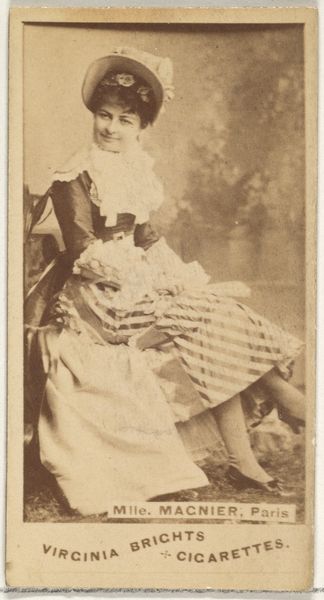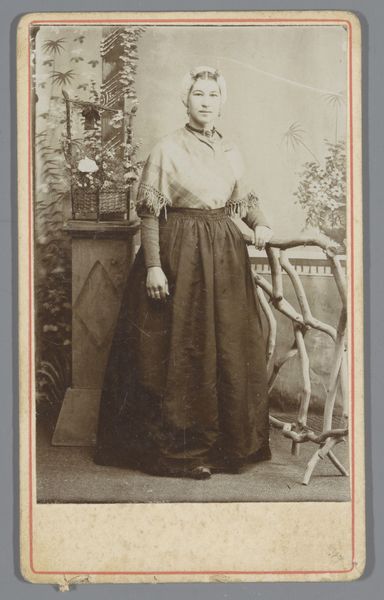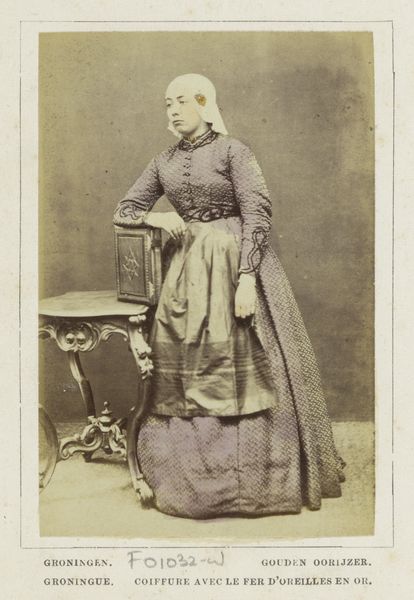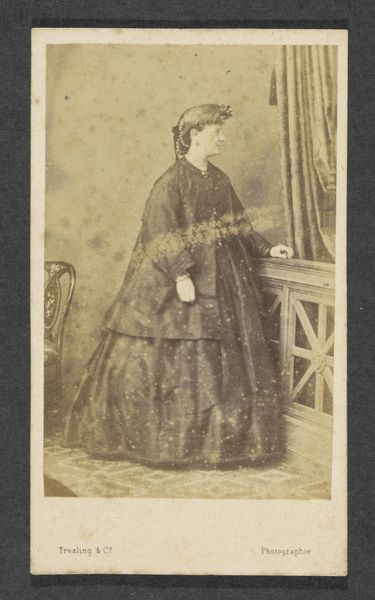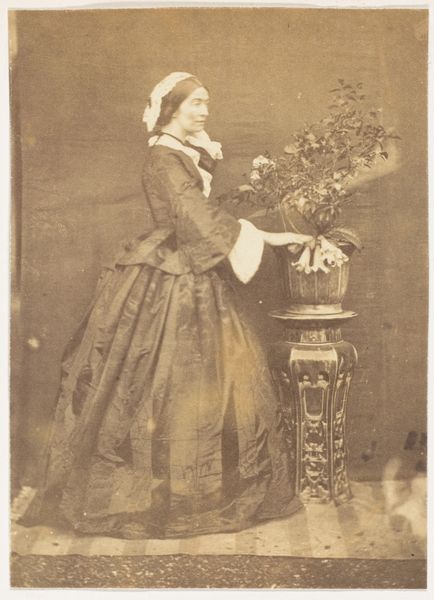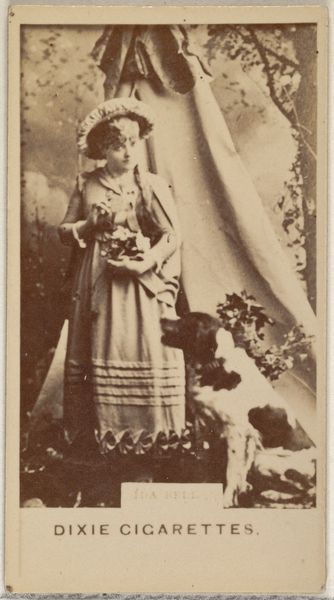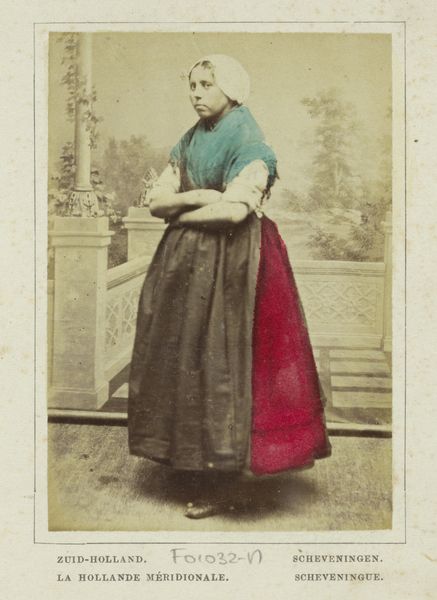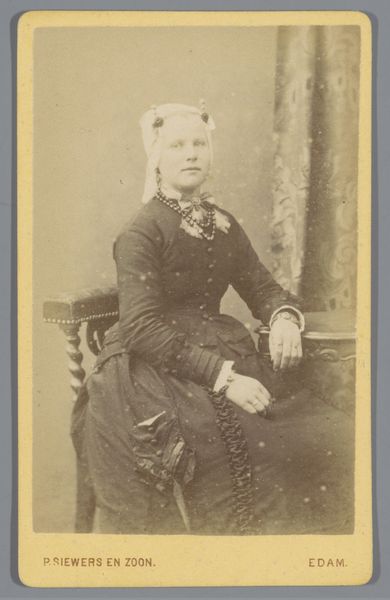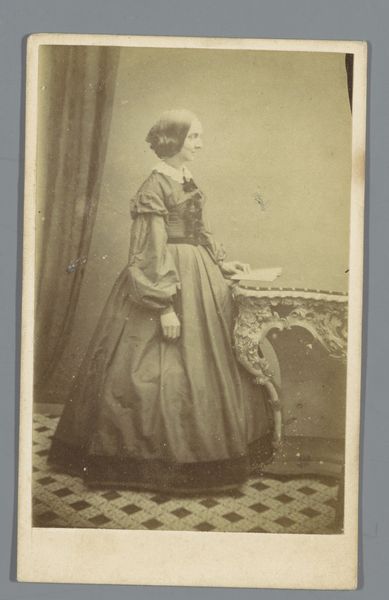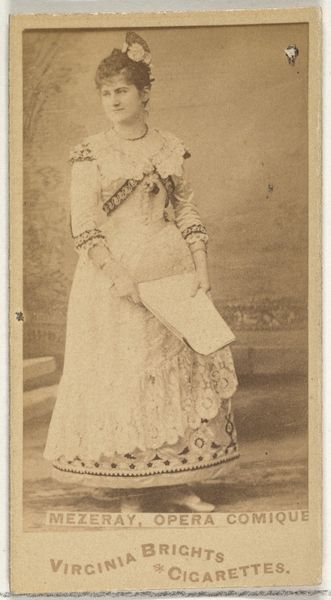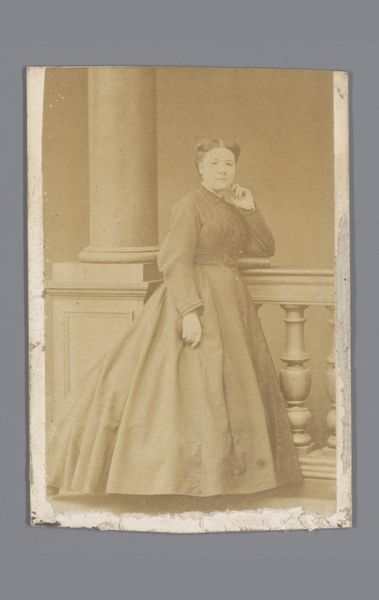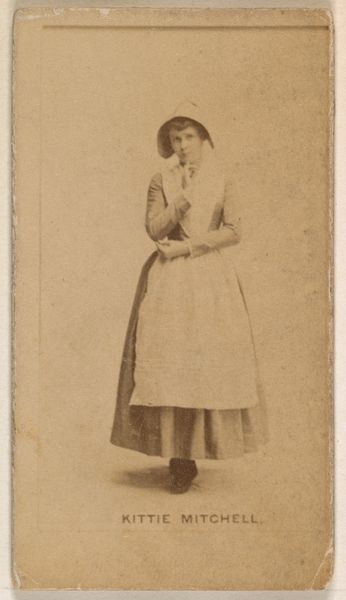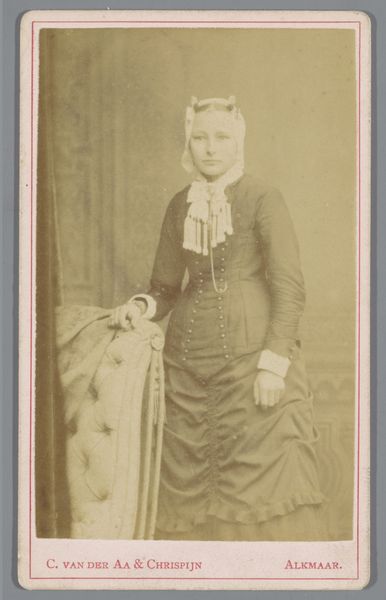
Portret van een onbekende vrouw in klederdracht van Nieuwland, Zeeland 1860 - 1890
0:00
0:00
Dimensions: height 86 mm, width 59 mm
Copyright: Rijks Museum: Open Domain
Curator: What strikes you first about this photograph, "Portret van een onbekende vrouw in klederdracht van Nieuwland, Zeeland," dating from between 1860 and 1890? Editor: The stillness. The muted tones, and the woman's almost stoic posture create a quiet, introspective atmosphere. She seems to be pausing in a daily task. Curator: Indeed. It's a superb example of 19th-century portraiture combined with what we might call genre-painting today. These photographs, popular at the time, played a key role in shaping and disseminating ideas about regional identity and national pride. The woman, of course, is shown in the traditional dress of Nieuwland, in Zeeland. Editor: And what does it mean to portray an anonymous woman? Whose identity is being showcased here? Is it hers, or the idealized representation of a Dutch woman rooted to a specific location? Are we to focus on the individual or a cultural collective? Curator: That's precisely the point. While appearing to depict an individual, it reflects the growing fascination with regional diversity within the burgeoning concept of the Dutch nation-state. These images were commodities. Purchased, collected, displayed, reinforcing particular understandings of what it meant to be Dutch. It emphasizes perceived differences rather than national commonalities. Editor: It's interesting to note the framing as well. Her figure is situated within a domestic landscape that emphasizes the working role of this individual, which feels crucial in underlining that this woman has a specific socio-economic identity too. This image reflects a conscious negotiation between preserving traditions and adapting to a changing modernizing society. The photo also feels rather melancholic. Curator: It's undeniable that photography played a significant role in both documenting and constructing cultural narratives. Images such as this had very tangible social and economic consequences. Editor: So, while ostensibly a portrait, this photograph reveals the power dynamics inherent in visual representation, underscoring the political charge of images. It pushes me to think critically about whose stories are being told and how those stories are constructed and disseminated. Curator: Precisely. And for me, it illuminates the complicated dance between representation, identity, and the evolving concept of nationhood in 19th-century Netherlands.
Comments
No comments
Be the first to comment and join the conversation on the ultimate creative platform.
